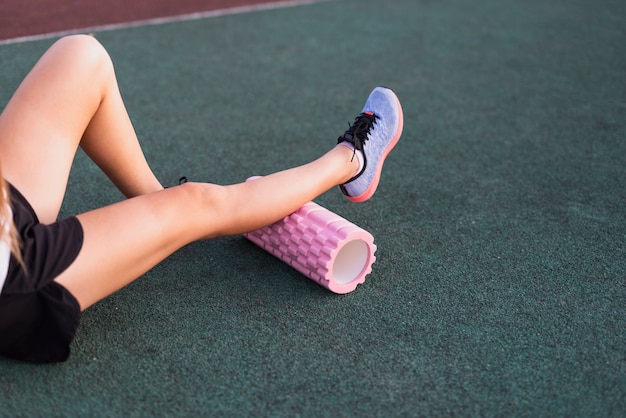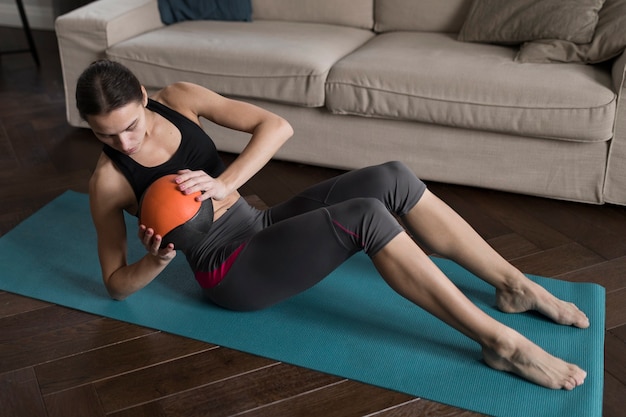Cycling is a fantastic low-impact cardiovascular workout, but repetitive motion and prolonged posture can strain your joints and tighten your fascia—the connective tissue surrounding muscles. Over time, this can lead to discomfort in the knees, hips, and lower back. The solution? Myofascial release (MFR), a self-care technique that helps release tension, improve mobility, and protect your joints.
In this guide, we’ll explore seven effective myofascial release techniques tailored for cyclists. You’ll learn how to start fast, stay consistent, and measure your results weekly to ensure long-term joint protection and performance gains.
Cycling involves repetitive pedaling motions and sustained forward-leaning postures. This can cause muscle imbalances, especially in the quads, hip flexors, hamstrings, and calves. Tight fascia restricts movement, reduces blood flow, and increases joint stress—particularly in the knees and hips.
Myofascial release helps break up adhesions, restore tissue elasticity, and improve joint mechanics. Regular practice not only prevents injury but also enhances recovery and cycling efficiency.

Foam rolling is one of the most accessible forms of myofascial release. Focus on high-tension areas like the quadriceps, iliotibial (IT) band, hamstrings, and calves.
Roll slowly—about one inch per second—and pause on tender spots for 30–60 seconds. Perform 2–3 times per week, especially after long rides.

Tight hip flexors are common in cyclists due to the bent-over riding position. These muscles connect the lower spine to the femur and can pull on the pelvis, affecting knee and lower back alignment.
Place a lacrosse ball under your hip flexor while lying face down. Gently shift your weight to apply pressure and roll in small circles. Spend 1–2 minutes per side, 2–3 times per week.
The glutes and piriformis play a key role in hip stability. When tight, they can compress the sciatic nerve and refer pain to the knee or lower back.
Sit on a lacrosse ball placed under one buttock. Cross the ankle of the targeted side over the opposite knee (figure-4 position) to deepen the release. Roll slowly and breathe deeply for 2 minutes per side.

The IT band runs along the outside of the thigh and often becomes overworked in cyclists. While you can’t stretch it like a muscle, you can release the surrounding tissue.
Use a massage stick or foam roller along the length of the IT band. Apply moderate pressure and roll from the hip to just above the knee. Limit sessions to 2 minutes per leg to avoid irritation.
Tight calves can alter ankle mechanics, leading to increased strain on the knee joint during pedaling. Use a foam roller or massage ball on both the gastrocnemius and soleus muscles.
Sit with legs extended and roll from the back of the knee to the Achilles tendon. For deeper work, cross one leg over the other to increase pressure. Perform 2–3 times weekly post-ride.
Myofascial release is most effective when followed by movement. After releasing tension, engage in dynamic stretches like leg swings, walking lunges, or bodyweight squats.
This helps retrain the nervous system, improve range of motion, and reinforce proper joint mechanics—key for injury prevention.
Consistency is crucial. To stay motivated, measure your results weekly using simple indicators:
Logging these metrics helps you identify patterns and adjust your routine for better joint protection.
Start with just 10 minutes, 3 times a week. Pair MFR with an existing habit—like after your shower or post-ride cooldown. Use a habit tracker app or calendar to mark completed sessions.
Over time, consistency leads to noticeable improvements in comfort, flexibility, and joint resilience.
Myofascial release isn’t a quick fix—it’s a long-term investment in your joint health as a cyclist. By integrating these seven techniques into your routine, you’ll reduce strain, improve performance, and ride pain-free for years to come.
Start fast, stay consistent, and measure your progress. Your joints will thank you.

Fitness

Fitness

Fitness

Fitness

Wellness

Wellness

Fitness

Fitness

Fitness

Fitness

Fitness

Fitness

Health

Fitness

Health

Health